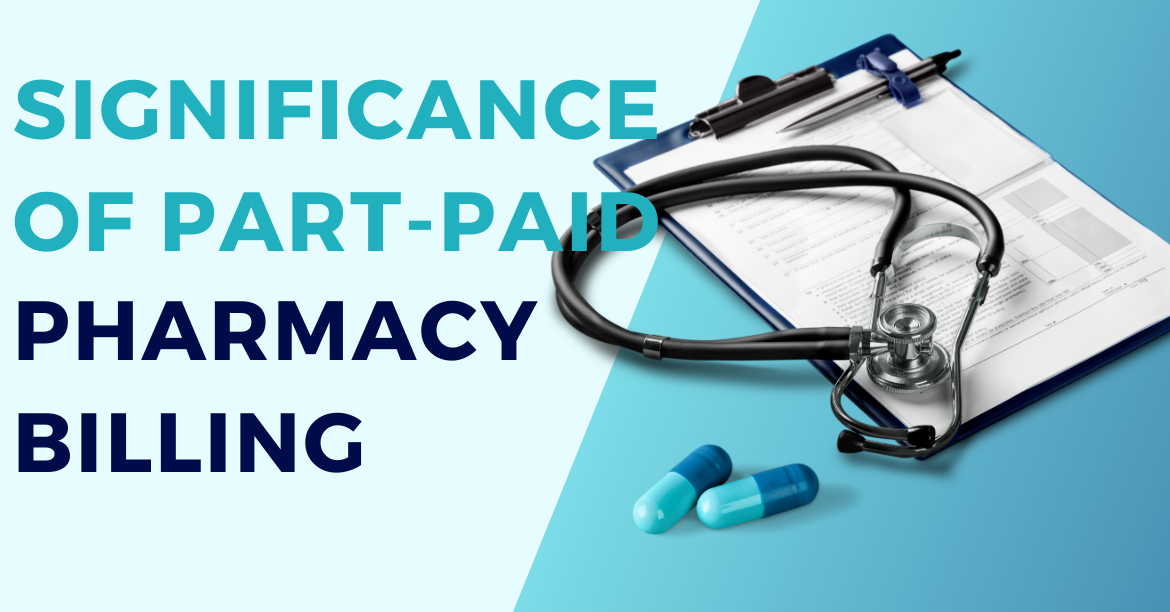


In today's rapidly evolving healthcare landscape, patient management has become increasingly complex, especially when it comes to managing pharmacy billing. Among the many challenges hospitals and pharmacies face is ensuring that patients can afford and access the medications they need without significant financial strain. This is where part-paid pharmacy billing becomes essential. By allowing patients to make partial payments for their prescribed medications, this billing system provides flexibility in payment while ensuring that patients receive their necessary treatments. In this blog, we'll explore the importance of part-paid pharmacy billing in patient management, its benefits for both patients and healthcare providers, and how it contributes to a more efficient healthcare ecosystem.

Part-paid pharmacy billing refers to a flexible payment option within pharmacy billing software that allows patients to pay a portion of their total medication bill at the time of service, with the remaining balance due at a later date. This feature is especially useful for patients who cannot afford the full cost of their medications upfront, offering them a way to access their prescriptions without delaying treatment.
In many healthcare facilities, this billing model is integrated into pharmacy management software. This system tracks outstanding balances, generates accurate invoices, and allows for detailed payment tracking. Patients can continue with their treatment plan without financial concerns becoming a barrier, while pharmacies maintain a clear record of payments and balances.
One of the most significant benefits of part-paid pharmacy billing is that it allows patients to access their medications without worrying about immediate full payment. This flexibility ensures that patients, especially those in low-income brackets or without insurance coverage, are not denied essential medications due to financial constraints. In emergency situations, such as inpatient treatments or long-term hospital stays, patients often require a multitude of medications, some of which may be costly. By allowing part payments, pharmacies enable patients to receive these medications immediately, avoiding any delays in critical treatment.
Medication adherence is a common issue in healthcare. Patients often skip doses or entirely stop taking their medications if they cannot afford refills. Part-paid pharmacy billing helps to combat this issue by breaking down the financial burden, thereby encouraging patients to continue their treatments as prescribed. This results in better patient outcomes, as medication adherence is key to managing chronic conditions, preventing relapses, and promoting recovery. Moreover, having an option to pay in installments can increase a patient's willingness to visit the pharmacy for refills, helping healthcare providers keep patients on track with their prescribed treatments.
Pharmacies can also benefit from part-paid billing as it increases their cash flow. Instead of patients delaying medication purchases until they have the full payment, they can pay in increments, ensuring that the pharmacy receives at least a portion of the revenue immediately. This system reduces the risk of patients not purchasing their prescriptions at all due to the high upfront cost. By offering part-paid billing, pharmacies can capture more sales, reduce the risk of uncollected debt, and maintain a consistent stream of income from patients who need multiple or long-term prescriptions.
When pharmacies offer flexible payment options, patients are more likely to trust and return to those establishments. The ability to make partial payments builds goodwill between patients and pharmacies, fostering a sense of support and care that extends beyond simply dispensing medications. By creating a payment plan that suits the patient's financial circumstances, pharmacies demonstrate their commitment to the patient's well-being. This improved patient experience can result in stronger loyalty and more referrals, ultimately boosting the pharmacy's reputation.
Pharmacy billing software that supports part-paid billing simplifies the entire process for both patients and healthcare providers. Here's a basic breakdown of how it works:
When a patient receives a prescription, the medication is entered into the system for billing. All prescribed medications from consultations, inpatient treatments, or self-prescriptions are automatically transferred to the pharmacy billing module.
If the patient is unable to pay the full amount, the pharmacy staff can offer the option for a part-payment. The billing software allows them to adjust the total amount due, accepting partial payment and generating an invoice that reflects the outstanding balance.
After collecting the partial payment, the system generates an invoice that clearly shows the amount paid and the remaining balance. Both the pharmacy and the patient can retain copies of the invoice for reference.
When the patient returns to complete the payment, the pharmacy staff can retrieve the patient's previous billing information, process the remaining payment, and issue a final receipt. The software allows for easy tracking of all partial payments made, ensuring that there are no discrepancies.
In some cases, if medications are returned or not used, pharmacies can issue refunds using the pharmacy return medicine module. The software adjusts the outstanding balance accordingly, providing transparency and maintaining trust between the patient and the pharmacy.
Part-paid pharmacy billing not only benefits patients and pharmacies, but it also plays a vital role in the larger healthcare ecosystem. By reducing financial barriers to medication access, this system helps ensure that patients follow through with their treatment plans. This leads to reduced hospital readmissions, improved health outcomes, and a more streamlined healthcare process.
Moreover, part-paid billing helps healthcare providers manage patient care more effectively. Doctors and pharmacists can be more confident that patients will continue their prescribed therapies without delay, knowing that financial limitations won't hinder their treatment.
As the healthcare industry continues to evolve, part-paid pharmacy billing is becoming an essential feature in pharmacy management. It provides patients with greater flexibility in paying for their medications while also enhancing patient adherence and compliance. For pharmacies, it ensures a steady stream of revenue and builds stronger relationships with patients. In the broader scope, it helps improve patient outcomes and contributes to a more efficient and accessible healthcare system.